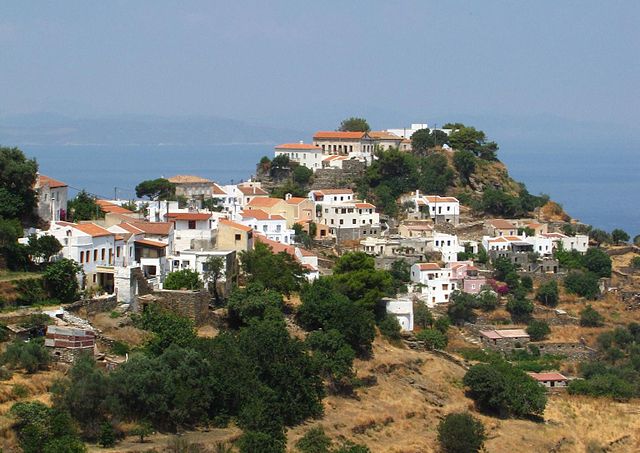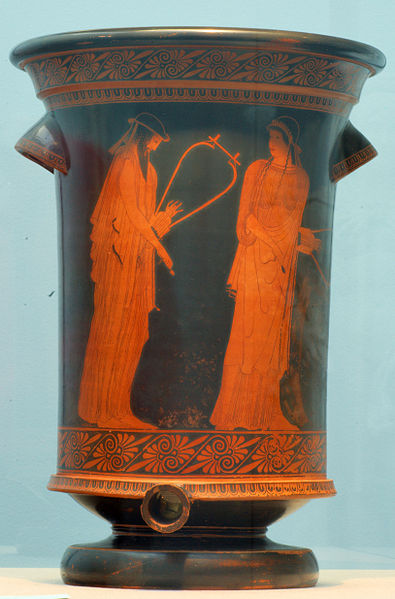Simonides of Ceos was a Greek lyric poet, born in Ioulis on Ceos. The scholars of Hellenistic Alexandria included him in the canonical list of the nine lyric poets esteemed by them as worthy of critical study. Included on this list were Bacchylides, his nephew, and Pindar, reputedly a bitter rival, both of whom benefited from his innovative approach to lyric poetry. Simonides, however, was more involved than either in the major events and with the personalities of their times.
Corinthian vase depicting Perseus, Andromeda and Ketos; the names are written in the archaic Greek alphabet.
Ioulis, present-day capital of Kea (Ceos in Ancient Greek), including remnants of the ancient acropolis. Like most Cycladic settlements, it was built inland on a readily defensible hill as protection against pirates
Lyric Poetry, painted by Henry Oliver Walker (Thomas Jefferson Building, Washington D.C.). "Simonides calls painting silent poetry and poetry painting that speaks" — Plutarch.
Greek lyric is the body of lyric poetry written in dialects of Ancient Greek.
It is primarily associated with the early 7th to the early 5th centuries BC, sometimes called the "Lyric Age of Greece", but continued to be written into the Hellenistic and Imperial periods.
Alcaeus and Sappho (Brygos Painter, Attic red-figure kalathos, c. 470 BC)




